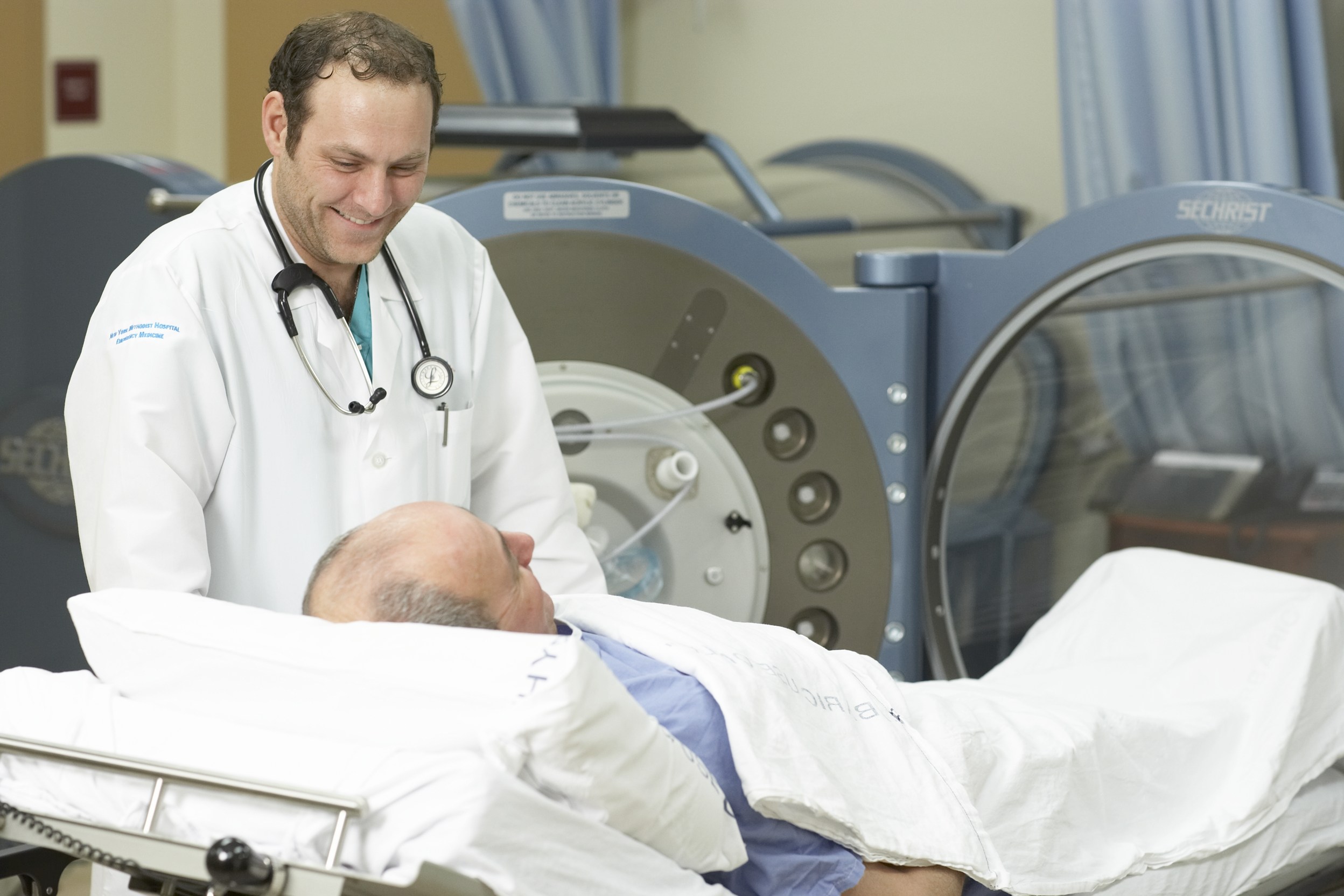New York Methodist Hospital's Wound Care Center Celebrates Success
Sep 12, 2012
Brooklyn, NY

Nicholas Vaccari, MD, Wound Care Center attending physician, with a patient.
In 2010, New York Methodist Hospital (NYM) launched the Wound Care and Hyperbaric Oxygen Therapy Center, a state-of-the-art facility dedicated to the treatment of wounds that, for various reasons, have not healed properly with standard medical care. Two years later, with hundreds of patients treated, NYM has announced that, in 2012 alone, the Center logged a 90 percent success rate in healing the previously "unhealable" wounds of Wound Care Center patients. The Center features a staff of wound care experts, as well as advanced, non-surgical options for healing wounds, including hyperbaric oxygen therapy (HBOT).
The Wound Care Center works in collaboration with other NYM departments to help heal patients, and part of its success is due to HBOT. Breathing 100 percent pure oxygen at an increased atmospheric pressure while inside the hyperbaric oxygen chamber increases blood circulation, supplies more oxygen to damaged tissue, reduces scarring, and increases stem cell activity. All of these factors have a profoundly beneficial impact on the healing process.
If the term "space-age" was used to describe any medical treatment, HBOT would be the one. At first glance, hyperbaric oxygen chambers appear to be straight out of 2001: A Space Odyssey. They are cylindrical, airtight, transparent, and allow a patient to comfortably watch television or a movie while they breathe 100 percent oxygen. However, the benefits HBOT provides to Wound Care Center patients are not science fiction by any means.
Used along with standard wound care, HBOT is an option for patients whose wounds have shown no measureable signs of healing for at least 30 days of treatment with traditional techniques. HBOT is often used to treat wounds in the lower extremities of patients who have type 1 or type 2 diabetes since, as a result of low oxygen levels and impaired circulation, foot ulcers in those patients sometimes fail to respond to standard wound care.
"For a time, conventional wisdom said that even the most conscientious diabetes patients would ultimately require an amputation due to complications from the illness," said Ronald Soave, D.P.M., chief of podiatry and director of wound care at the Center. "Thanks to HBOT, that notion is rapidly becoming outdated."
However, care for diabetic wounds is only a portion of the treatment options available at the Center. Other HBOT applications include the treatment of compromised skin grafts/flaps (patches of skin that have been surgically removed from one area of the body and then transplanted, or attached, to another area), soft tissue radionecrosis (death of cells in bones, organs, and soft tissues, primarily due to radiation therapy for cancer), and chronic refractory osteomyelitis (a bacterial infection involving bone) that fails to heal despite adequate surgical and antibiotic therapy.
"Coupling advanced wound care therapy with the attentiveness the Center provides makes for an incredible service," said Nicholas Vaccari, MD, Wound Care Center attending physician. "We're taking care of patients' needs in collaboration with their physicians, and ensuring that they receive comprehensive treatment that will allow them to heal, in more ways than one."



